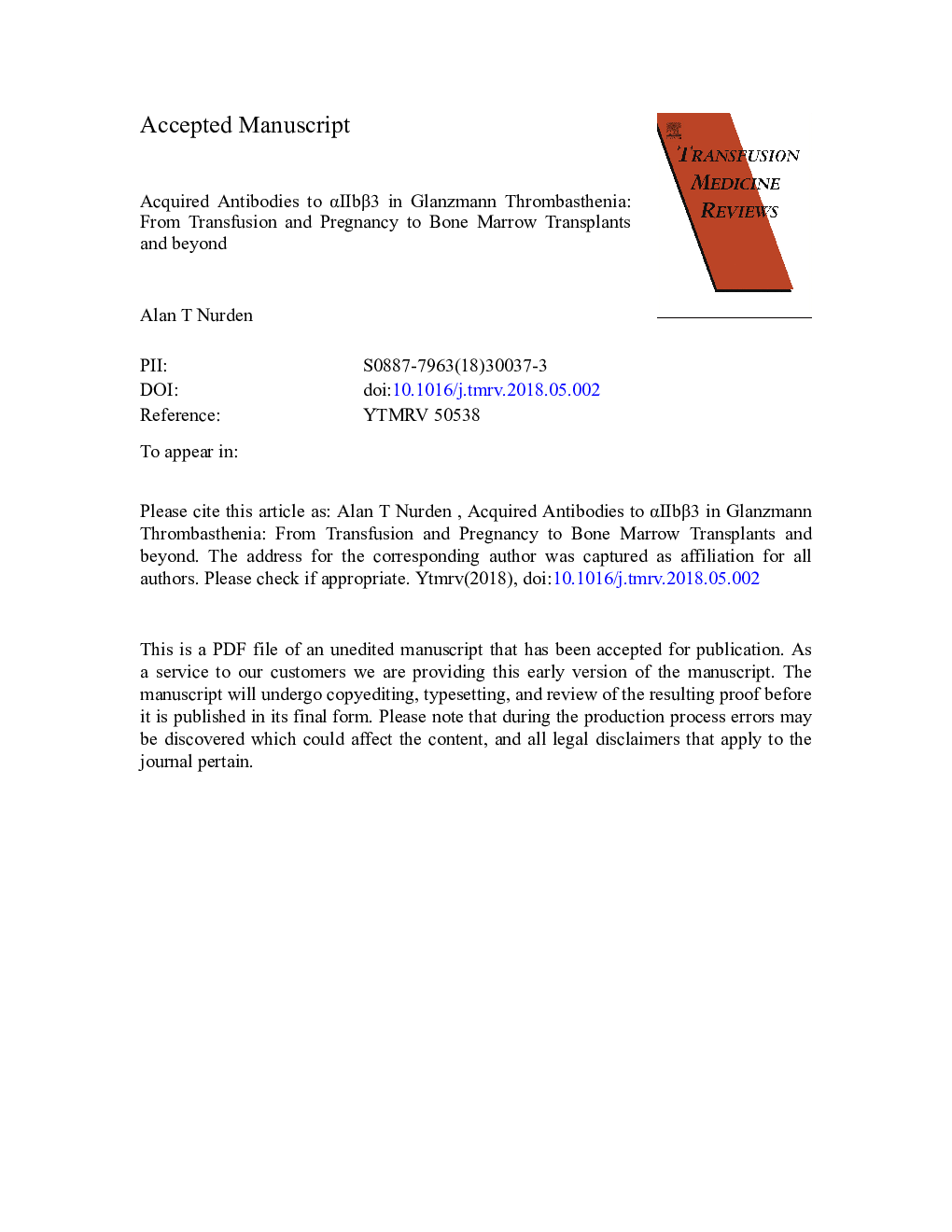| Article ID | Journal | Published Year | Pages | File Type |
|---|---|---|---|---|
| 8735168 | Transfusion Medicine Reviews | 2018 | 42 Pages |
Abstract
Patients with the inherited bleeding disorder Glanzmann thrombasthenia (GT) possess platelets that lack αIIbβ3 integrin and fail to aggregate, and have moderate to severe mucocutaneous bleeding. Many become refractory to platelet transfusions due to the formation of isoantibodies to αIIbβ3 with the rapid elimination of donor platelets and/or a block of function. Epitope characterization has shown isoantibodies to be polyclonal and to recognize different epitopes on the integrin with β3 a major site and αvβ3 on endothelial and vascular cells a newly recognized target. Pregnancy in GT can also lead to isoantibody formation when fetal cells with β3 integrins pass into the circulation of a mother lacking them; a consequence is neonatal thrombocytopenia and a high risk of mortality. Antibody removal prior to donor transfusions can provide transient relief, but all evidence points to recombinant FVIIa as the first choice for GT patients either to stop bleeding or as prophylaxis. Promoting thrombin generation by rFVIIa favors GT platelet interaction with fibrin, and the risk of deep vein thrombosis also associated with prolonged immobilization and catheter use requires surveillance. Although having a high risk, allogeneic bone marrow transplantation associated with different stem cell sources and conditioning regimens has proved successful in many cases of severe GT with antibodies, and often, the associated conditioning and immunosuppressive therapy leads to loss of isoantibody production. Animal models of gene therapy for GT show promising results, but isoantibody production can be stimulated and CRISPR/Cas9 technology has yet to be applied. Up-to-date consensus protocols for dealing with isoantibodies in GT are urgently required, and networks providing patient care should be expanded.
Related Topics
Health Sciences
Medicine and Dentistry
Hematology
Authors
Alan T. Nurden,
